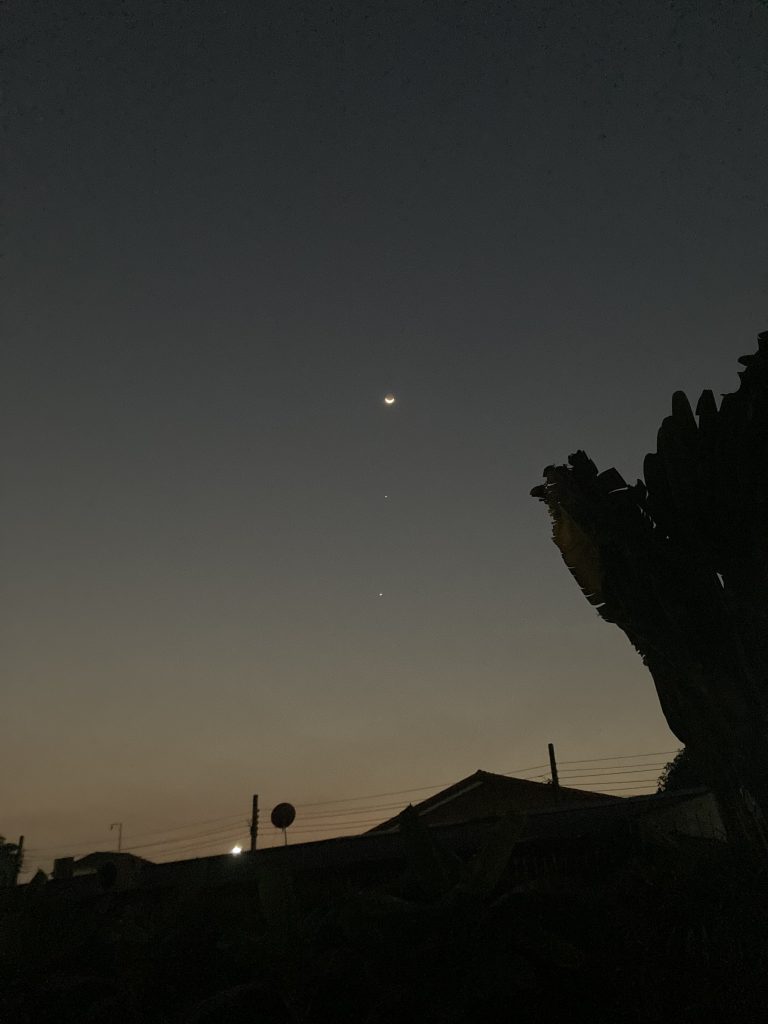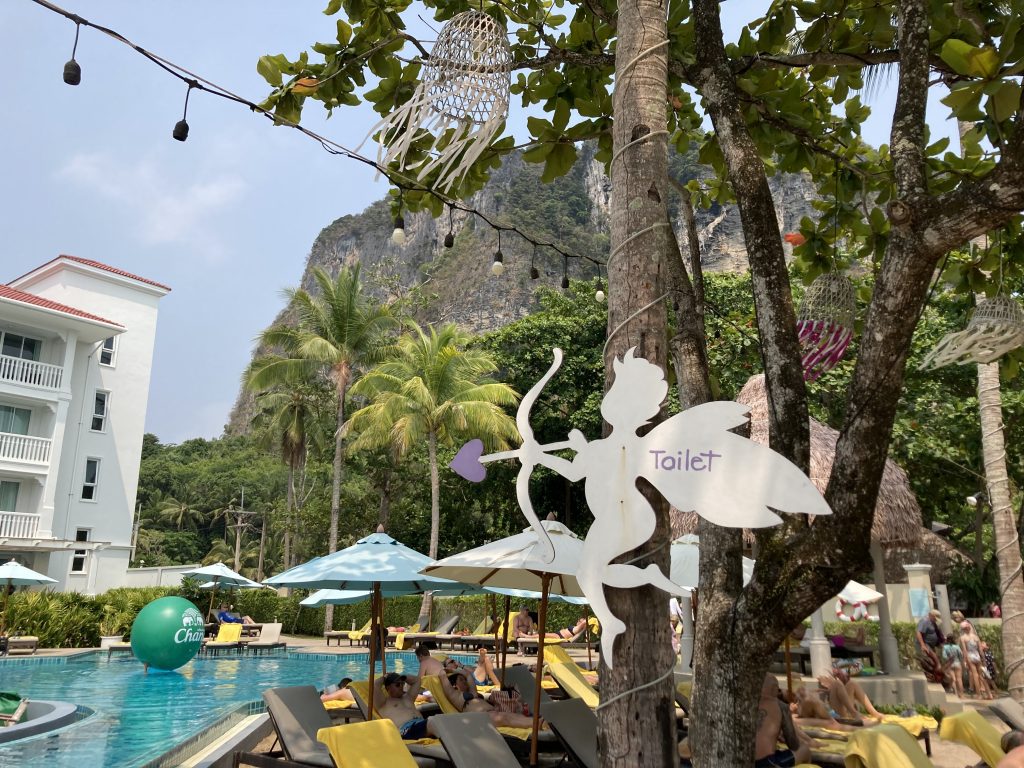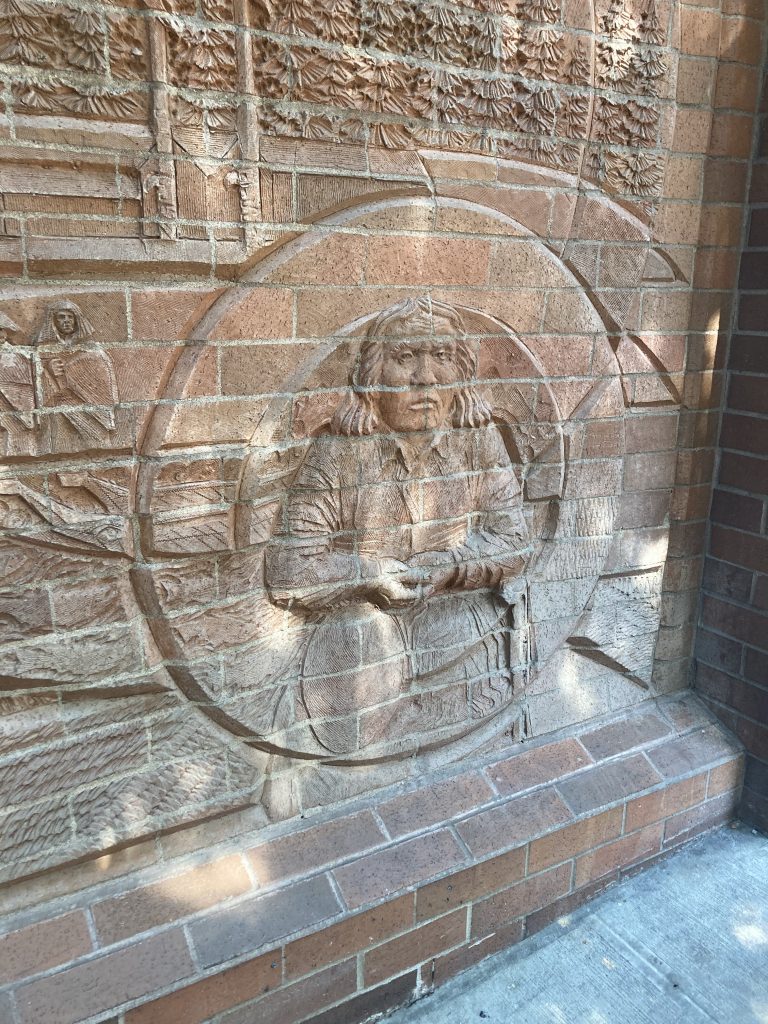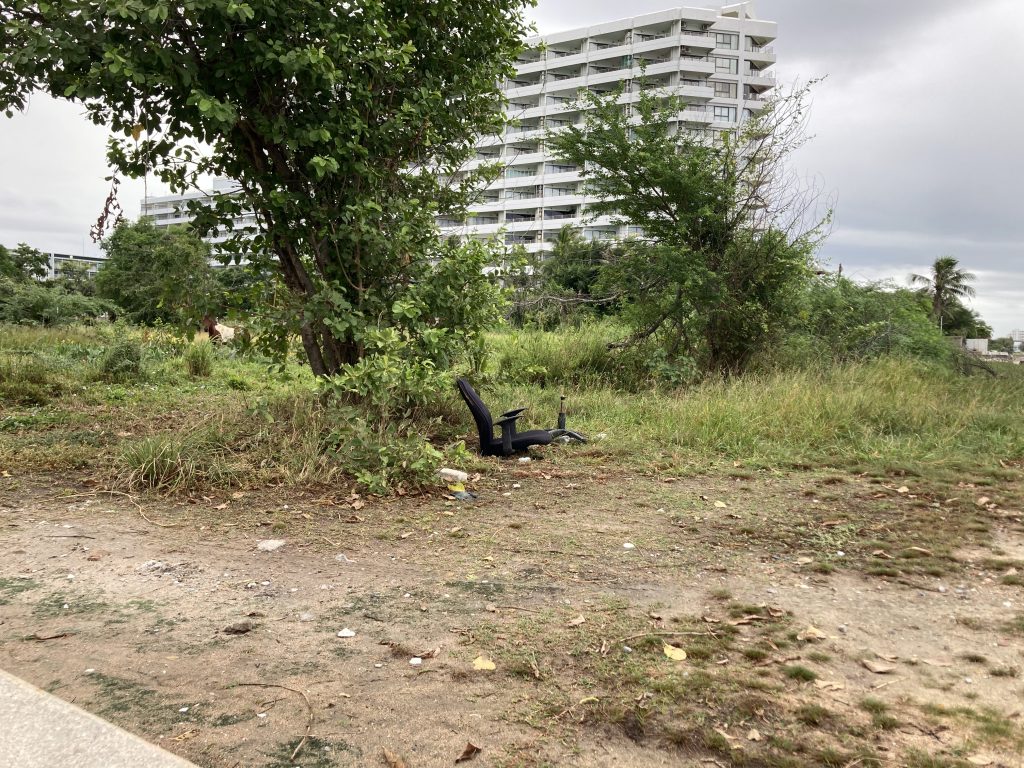alignment

The traveler explores the American Wayside, verifying the contents of a mysterious guide written by a man with whom he shares a likeness and name. Excerpts from ‘Autumn by the Wayside: A Guide to America’s Shitholes’ are italicized. Traveler commentary is written in plain text.

‘‘The Free Mattress Dump,’ ‘The Spring Brambles,’ or, in some circles, ‘The Tetanus Garden,’ is a thousand mattresses decaying in an otherwise abandoned Connecticut field. The seed of this strange crop was planted when a local farmer, disgusted at the surreptitious furniture dumping of his neighbors, offered a place to toss mattresses right where everyone would see them daily: on his plot of land next to the freeway. This shaming tactic failed spectacularly, the farmer having underestimated the number of old mattresses that were stored in houses for the perceived cost-prohibitiveness or geographical inaccessibility of local dumps. Too stubborn to admit he was wrong, the field has been lost to the mattresses.
Some say there is a treasure in the fields and that the farmer’s mistake was actually a ploy to frustrate would-be thieves and their amateur metal detectors. This is likely half-true by way of the country’s overall saturation with hidden treasure. This is a nation that buries things- valuable and dangerous. This is a country that sometimes forgets which is buried where.’
I don’t have the money to board Hector again so he comes with me into ‘The Spring Brambles’ and, being careful from all his many years of blindness, passes between the rusted springs without much issue. I don’t fare so well, which makes me thankful for the booster shots I sometimes pick up at free clinics and for the haphazard mess of papers in my bag, among which I found proof of a semi-recent tetanus vaccine and a suggestion that, finding myself torn ragged by dump-metal, I would only need to seek out an additional injection to cover my bases.
I am not quite ragged after an hour in ‘The Bramble,’ but the thrift-store leather jacket I bought as armor for this particular outing is missing a few of its unseemly patches and I am lost, despite being able to see the motorcycle and the freeway in the distance. The nature of the mattress springs is that they have a tendency toward entropical shift. Tangled as they are, a single break can release the tension required to reshape the web of metal as far as half a mile away, closing paths that were once safe and opening new, unmarked exits.
I was prepared for this and, as night falls and I experience the disorientation caused by a flashlight beam playing across the old mattresses, I make camp at the first available clearing and resign myself to a lightless evening under the stars with the mad twanging of tense metal as the only sound but for the distant passing of a car on the freeway. It’s said that Ranger visits ‘The Spring Brambles’ on Mondays and Fridays, armed with heavy wire cutters and puncture-resistant armor to help those who find themselves stranded as I do now.
Like most Americans, I have yet to shake my suspicion of rest. But it’s Wednesday which means, barring a clearing collapse, I will have a rare day of peace made mandatory by threat of harm.
Just the way I like it.
-traveler

The top review for ‘Horrific Wastes National Park’ states, simply: It was much worse than I imagined. Reading that, I suspected I could adjust my expectations accordingly but I could not. ‘Horrific Wastes National Park’ is a site that resists seeing- a painful checkmark on any traveler’s list. It starts with the dust.
‘The dust of ‘Horrific Wastes National Park’ is a known carcinogen. Grayish-black. Powder-thin. It works its way into engines and electronics and clothes, emerging months- sometimes even years- after a visitor leaves the park behind. Law firms sometimes volunteer to press charges on behalf of those affected but there is no one to sue. It is nature at its most cruel.
‘Horrific Wastes National Park’ is, realistically, just piles of this dust. Piles tall enough to be considered landscape. Beneath is a field of sharp rocks, the tips of which sometimes break off and work their way up into the dust. Amongst the rocks there are biting insects. Amongst the insects there is disease.
There is a sport people play only in ‘Horrific Wastes’ and that sport is survival. People attempt to stay in the ‘Wastes’ longer than anyone else and then must survive at least 90 days afterward, proving they did not consume too much of the dust too quickly or contract the ‘Horrific Wasting Disease’ from the insects. The record is a week and a half, set by a man who died 91 days after his stint.
A hit and run.’
I board Hector before heading into ‘Horrific Wastes.’ It doesn’t seem worth trying to shove him into the suits they’ve made for hiking dogs, but it does leave me explaining that I am not the one responsible for his hairlessness and the charred complexion of his skin. It leaves me worried I’ll be reported somewhere, even if all signs point to Hector being healthy and well fed in the present. I leave him with sunblock and that seems to help put their concerns to rest. Anybody who buys top shelf infant sunblock for their rabbit must be good to pets.
Right?
I leave my number and tell them I’m going into ‘Horrific Wastes’ for a night. They recite the names of the people they’ve known who have died there and I assure them I’m taking all the normal precautions: renting a safety suit from the Rangers nearby, spending just one night, and fasting the entire time so that I only have to breach the lower portion of the suit while relieving myself. It seems like too much to be telling strangers, but they nod as though it’s business as usual.
The ‘safe zone’ of ‘Horrific Wastes National Park’ is maintained such that the dust is regularly flattened, some, and that there is a hospital nearby. I struggle to set up my tent in the swirling wastes before realizing it won’t make a difference. I lie down in the dust and wait for the evening to pass.
And the dust swirls about me in clouds.
And the insects hover like stars on the bubbled glass of my suit.
And it’s nice, almost, until I have to pee and feel the stinging of the cancerous terrain on the most sensitive portion of my body.
And until the bugs get inside my suit.
It is much worse than I imagined it would be and I only stay a few hours.
-traveler

‘There was no intention to create ‘The Doll Slum’ when ‘The East Coast Doll Museum and Shop’ rolled out its volunteer program for local kids, but here we are, one doll slum richer for those good intentions. It seemed like a good idea on paper: local students were tasked with creating homes and backdrops for dolls that were a little too old- a little too worn- for proper displays within the museum. Those projects were cute, of course. They were kitschy.
Most of all, they were structurally unsound.
More and more dolls poured into the museum and, as the curators for main display specimens became increasingly selective, the vast majority of the new arrivals flooded the children’s display. Dolls were packed tightly into rooms meant for one or two and as the weak, child-made infrastructure failed under their weight, many dolls were forced to pose outside. Despite the obvious flaws in the initial structure, child labor is still the main source of upkeep in ‘The Doll Slum’ and so the cycle of detriment continues. The uneducated and unpaid are exploited for their labor and the needy are left without the space to thrive.’
-an excerpt, Autumn by the Wayside

‘It is a complex geographical quirk that drives a number of the nation’s time capsules to ‘Time Field’ in Nebraska. Experts have explained it in terms that the layman cannot understand. ‘Tectonic currents.’ ‘Rolling sandstone decay.’ ‘Cataclysmic fracking vacuums.’ These are phrases that they use in their explanations. They mean so much that they hardly mean anything at all.
‘Time Field’ was established as a local phenomenon in the eighties. Old stuff just showed up there, dirty but in good condition. People exhibited a surprising amount of disinterest. Some even reacted with annoyance, as though antique stores had conspired to intermittently dump unsold goods in this one spot.
Before the internet- before the number of people talking about a thing could reach critical mass in seconds- we just took this sort of thing for granted. Things happened, sometimes. Strange things. This was one of them.
In 2003, for the complicated reasons hinted at above, ‘Time Field’ burst like a plump zit, releasing a cache of time capsules that had been building below the surface of the earth for some time. It drains to this day, visitors picking at the surface like a self-conscious teenager with dirty nails.’
Descriptions of ‘Time Field’ are rife with gross, bodily metaphors. Shrapnel being expelled through long-healed flesh. Teeth working their way out of a baby’s skull. The capsules are the foreign bodies and ‘Time Field’ is, somehow, the path of least resistance in regard to the Earth expelling them.
The place is a dump. The eggshell detritus of cracked time capsules lends a jaggedness to the ground. Paper and cloth mix to a pulp, wet with a recent rain. Hector sniffs for anything edible, occasionally stopping to dig up the wrapper of some long-defunct candy line. A man on the other end of the field side-eyes me as I stoop to grab a quarter, wondering if I’ve found something he missed, I imagine, or warning me away from his spot ahead. The quarter was minted last year- probably fell out of somebody’s pocket.
I don’t have the patience to dig.
Instead, and as is increasingly the tradition, Hector and I scout out a place to sit and eat and reflect upon ‘Time Field’ in case it has a message for me- some clue as to whether this is worth it or when it might conclude. Hector pulls the ring off a dead woman’s hand about 15 minutes later. Costume jewelry from a casket carried on the same dark tide that brings everything else here. I throw it back when Hector isn’t looking.
Ashes. Bones. I’d like to find a way to escape, myself, but, given enough time, just about anything will end up back on the Wayside.
-traveler

Much of the advertising for ‘Radical Horse Rides’ features a man standing on a horse surfboard-style while it gallops along a beach. Given that ‘Radical Horse Rides’ is firmly situated in the Midwest and is, therefore, landlocked, I assume that position of the man is as exaggerated as the scenery.
It is not.
There is a man doing exactly that when I arrive and, unlike the model, he looks terrified. The horse looks terrified as well. And uncomfortable. The man is screaming as he nears the edge of the edge of ‘Radical Horse Rides’’ property. He disappears into the forest and his screaming fades. A woman, also on a horse (but sitting), checks her watch and trots after him. She spots me in the parking lot just before she’s out of sight and whistles for the attention of a man near the stables, who looks up from his phone.
These people work here.
‘The people at ‘Radical Horse Rides’ will show you all manner of credentials, each proving that they are licensed to and more than capable of teaching people to ride horses. They will show you certificates that state ‘Radical Horse Rides’ has been deemed humane and hygienic. All of this flies in the face of what you will experience and the author leaves it to you to decide who to believe and where you choose to spend your money.’
“Your basic package consists of an hour of riding and two positions,” the man, Buck, explains. He hands me a menu. “These are the positions we’ve got available.”
The menu consists entirely of various configurations of human and horse silhouettes. Surfboard-style has a little icon indicating it’s a ‘Popular Choice.’ Another popular choice is standing but with each foot on a different horse, charging forward as if to war. Less popular choices seem to include riding backwards, lying down, leaning to the side with a bow and arrow, being dragged behind a horse (from various limbs), and one that seems like it might be a man carrying a horse. The menu is hundreds of pages long. The man ignores me for his phone, giving me the privacy to look over it in full.
“What about just normal riding?”
He steps over and flips through the booklet: forward, forward, back. He points to a picture of a man riding a horse in the normal, seated position.
“Can I bring my rabbit?” I ask.
The man flips back three times. Forward once. He points to a picture of a man riding a horse with a rabbit in his lap.
“That’s the one,” I tell him.
A hundred dollars later, Hector and I circle the clearing on a horse, each of us uncomfortable, but not so far from comfort as to be scared.
-traveler
© 2024 · Dylan Bach // Sun Logo - Jessica Hayworth